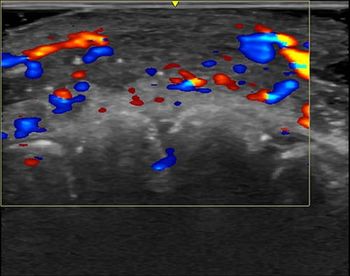
Philips debuts high-end, low-cost MR scanners
Philips Healthcare unveiled two MR scanners on the RSNA 2008 exhibit floor: one at 3T, the other at 1.5T. Both emphasize productivity and clinical value, albeit by different means.
Philips Healthcare unveiled two MR scanners on the RSNA 2008 exhibit floor: one at 3T, the other at 1.5T. Both emphasize productivity and clinical value, albeit by different means.
The Achieva 3.0T TX expands the range of 3T applications possible with routine scanning through higher speed and better image quality using a novel technology dubbed MultiTransmit RF management. This technology automatically adjusts the RF signal to the specific body habitus and anatomy of the patient being scanned. The results, according to Philips, are higher acquisition speed, as well as better image quality and consistency. Together they offer new clinical possibilities for scanning the breast, liver, pelvis, and spine at 3T, according to the company.
Philips extended its current 1.5T platform with the Achieva SE, a scanner designed for budget-constrained customers. The scanner combines high-performance imaging and low capital cost through a sub-$1 million price tag, lower operating costs, and compact siting. The same basic platform drives both the Achieva SE and the high-end Achieva 1.5T A-Series, but the new product is repackaged without the more advanced clinical capabilities of the A-Series. Power-saving features reduce energy consumption -- and energy costs -- by up to 50%, according to Philips.
Newsletter
Stay at the forefront of radiology with the Diagnostic Imaging newsletter, delivering the latest news, clinical insights, and imaging advancements for today’s radiologists.




























